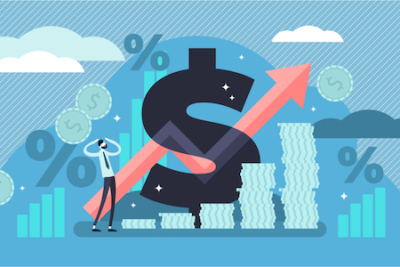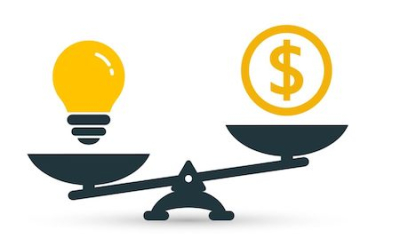Three Pricing Issues for CFOs to Watch Out For

Mark Stiving shares three innovative pricing concepts in this piece that all finance leaders will benefit from.
1. Cost Plus Pricing
Cost plus pricing is one of, if not the most commonly used pricing technique in business today. After all, it’s easy to implement, it ensures you a decent margin, it makes competing predictable, and it’s fair to all your customers. Unfortunately, it leaves a great deal of money on the table. Let’s go through each of the pros and cons in detail.
THE BENEFITS OF COST PLUS PRICING
Easy to implement.
Once you’ve decided the margin you want, you simply multiply your variable costs by a markup to get your price. For example, if you want 50% margin, you multiply your variable costs by two. If you want 66% margin, you multiply it by three. This is especially beneficial when you have many different products and can’t set individual prices.
Ensures a reasonable margin.
By applying the same markup to all products, you know you’re guaranteed the same margin on each product. Firms with more complex pricing mechanisms may be surprised by smaller margins than they expected.
Competition is predictable.
If both you and your competitors have many products, it can be difficult to know how to price relative to your competition on every part. However, knowing your competitor uses a standard markup allows you to use your own standard markup, and remain consistently priced relative to your competition.
It’s fair.
Many business owners aren’t comfortable charging different customers different prices, or even charging different markups for different products; they feel it isn’t fair. So, they opt for cost-plus pricing, which appears fair.
THE DRAWBACKS OF COST PLUS PRICING
Despite these benefits, cost-plus pricing is not a profit-maximizing pricing technique. In past posts we have talked about pricing according to how much our customers are willing to pay – this is how to maximize our profits. Price to our customer’s willingness to pay.
We should know the minimum margin we are willing to accept, but this isn’t cost-plus pricing – it’s a price floor. If our customers are not willing to at least pay an amount equal to our variable costs plus a small margin, then we should not be selling the product in the first place.
Are you currently using cost-plus pricing? Do you think the benefits of using cost-plus pricing are greater than the extra profit to be gained by pricing based on value? Or, are you unsure how to move away from cost-plus pricing?
THE ACTION YOU CAN TAKE TODAY
If you’re curious about making the transition, let me suggest you start with a modified cost-plus approach. Keep your current process, but find one customer segment who is willing to pay more, and charge a higher price to those customers. Or, if you have a good, better, best product family, raise the price on the best. You will quickly see there is a lot of money to be made by pricing based on customer value rather than your costs. Slowly add more segments or more techniques, and soon you will not be looking back at cost-based pricing at all.
2. Volume-Based Discounting
Many companies give a discount to customers who buy in volume. Do you do this?
Stop reading for just a moment, and consider: Why do you do it? Why is it so common for companies to offer volume discounts?
One answer to this question is because it costs us less. We only had to process one order, so our expenses were lower per unit/product. It simply costs us less per unit when one customer buys more than one product at a time. Why shouldn’t we pass that savings on to our customer? This answer is common, and it’s logical, but it’s also wrong.
At least, it’s wrong from the perspective of optimal pricing. After all, why should we charge less simply because it costs us less? This sounds a lot like cost plus pricing.
Optimal pricing is about pricing our customers’ willingness to pay for a product. The answer (our price) should be based on how customers perceive our value, not based on our costs.
I can come up with three reasons to give volume based discounts.
THREE VALUE BASED REASONS TO GIVE VOLUME BASED DISCOUNTS
There are three good reasons for giving a volume-based discount. All of them are based on VALUE.
1. Customers who buy higher volumes typically spend more money. The more someone spends on something, the more effort they’re willing to exert in order to get a better price. Customers who put in more effort to find or negotiate a lower price are by definition more price sensitive. If giving them a lower price keeps them from looking to our competitors for a lower price, then we get to win them.
2. Our competitors may charge less for higher volumes – for many possible reasons. But their reasons don’t matter. However this means our customers are now comparing the price of 100 of our products to 100 of our competitor’s products, so our volume prices should at least be comparable (value-adjusted of course) to the volume prices of our competitors. If our competitors use volume-based pricing, we may in some cases need to do the same to remain competitive. Remember, our customers measure value by comparing our products and price to our competitor’s products and prices.

3. For many products, especially consumer goods, a second unit is less valuable to a customer than the first – this is also known as the law of diminishing marginal utility in economics. Imagine you want to buy a CD, so you go into a record store and shop around. You find one you really want and are ready to check out when you see a sign: “Buy one, get the second one half price”. You weren’t going to buy a second CD – at least not at full price – but now you might shop around and find a second one, just so you can take advantage of the discount. This is an example of how a business can still capture a customer’s lower willingness to pay for a second or subsequent item. In this way, volume discounts allow you to capture incremental sales without having to discount the first sale.
In your business, what volume discounts are you offering? Why? If the reason doesn’t fit into one listed below, consider discontinuing the discount
THE ACTION YOU CAN TAKE TODAY
Think about your own volume discounts. Are you offering them for one of the three reasons above? If not, reevaluate your decision to discount or share your reason for giving the discount with me, Mark Stiving.
3. Pricing is NOT Driven by Supply and Demand
If you’ve ever taken a macro-economics course, you know that price is where the supply curve intersects with the demand curve … in theory. For some reason, every time I think of supply and demand, I also think of the Doritos commercial where Jay Leno says, “Crunch all you want, we’ll make more.” Was he saying they weren’t limited by supply? If supply equals demand, why would Doritos ever make more?
The macroeconomist’s view makes a lot of sense when the product is a commodity and we are looking at market supply, not an individual company. In the case of a commodity, buyers only buy on price, so all prices are driven down to the lowest acceptable price, which is barely above costs.
Jay Leno’s statement makes sense because of differentiation. If all chips are identical except Doritos, then the company would charge a higher price for Doritos because some people are willing to pay more for Doritos than other chips. Since Doritos are unique, there is no equivalent competition driving their supply down to cost.
Now the question becomes, how much more should they charge? In this case, instead of supply driving costs, price is driving demand. If the company could determine a demand curve, meaning they know how many units they will sell at each price, they could calculate the profit-maximizing price.
Now let’s add a competitor in the world of game theory and implicit collusion. Imagine there is a single identical competitor to Doritos, meaning buyers only choose between them based on price. We could imagine they would each try to undercut the other on price until they reach their marginal costs. But, knowing that inevitable horrible outcome, neither undercuts the other. They both hold prices high and split the market at a higher price. This equilibrium price is more challenging to calculate, but the point – once again – supply and demand do not drive optimal pricing.
THE ACTION YOU CAN TAKE TODAY
What should drive optimal pricing? That’s easy: value!
Answer the following questions:
- What do your buyers value?
- How much are your buyers willing to pay for that value? - Value is a huge topic, but it’s the only thing that should matter to setting your prices.
- How can you use data analytics to discover customer value?
With the analytical tools finance chiefs have at their disposal today, discovering the approximate value our customers perceive in our products is more accessible to us now than ever.
Don’t leave money on the table, price for value, not a gross margin percentage.
Identify your path to CFO success by taking our CFO Readiness Assessmentᵀᴹ.
Become a Member today and get 30% off on-demand courses and tools!
For the most up to date and relevant accounting, finance, treasury and leadership headlines all in one place subscribe to The Balanced Digest.
Follow us on Linkedin!
